North Carolina’s American Tobacco Trail
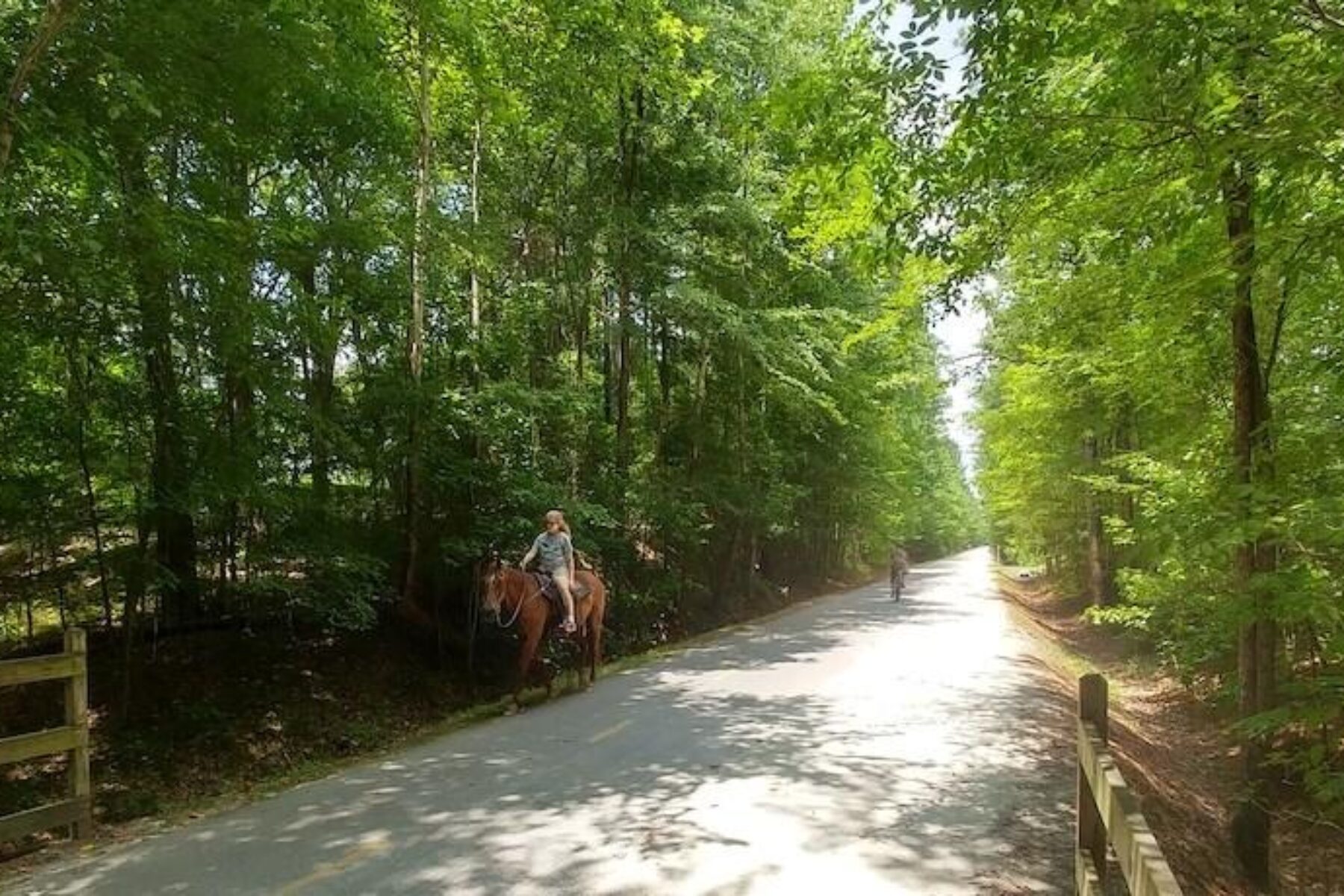
Trail of the Month: Feb. 2022
“It’s fun to see little ones on the local trails safely learning how to operate their first bicycles, and it’s inspiring to see Barry, a nearly 90-year-old, on his daily ATT ride.”
—Dave Connelly, a longtime local bike-ped advocate
Sharon Mosley is a licensed mental health therapist whose Durham office is just steps away from the 22.2-mile American Tobacco Trail (ATT). Almost any day of the week, you can find Mosley on the trail. Some days she’s training for the upcoming Tobacco Road Half Marathon, and other days she’s simply taking a weekend stroll with her husband. And on occasion, she may be engaging in a unique form of therapy with a client.
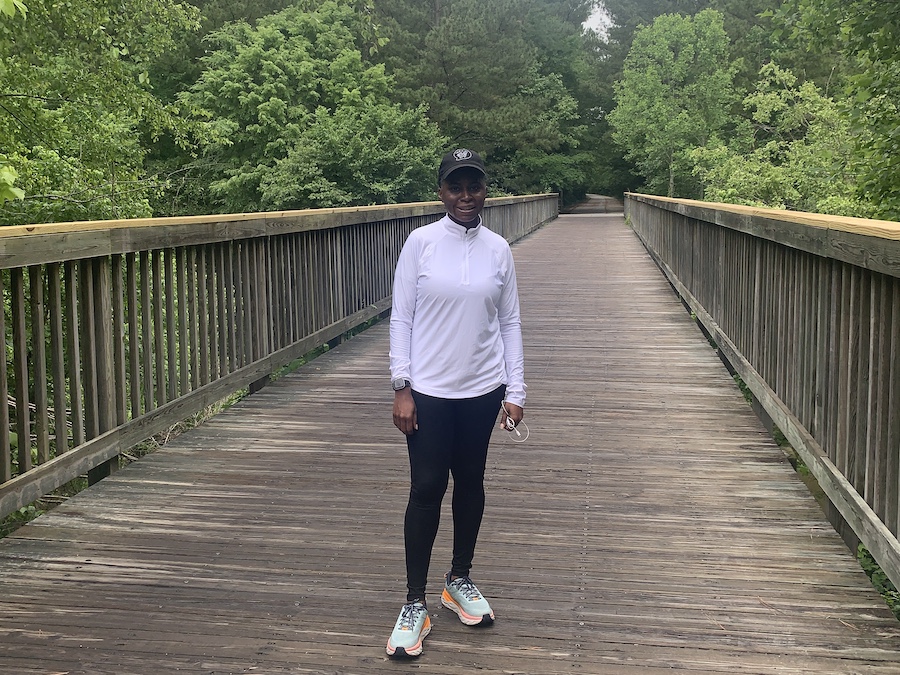
“I offer walk and talk therapy with folks who are interested and willing to take a walk during their sessions,” said Mosley. “The Tobacco Trail is a convenient and beautiful place to do that.”
From Train to Trail
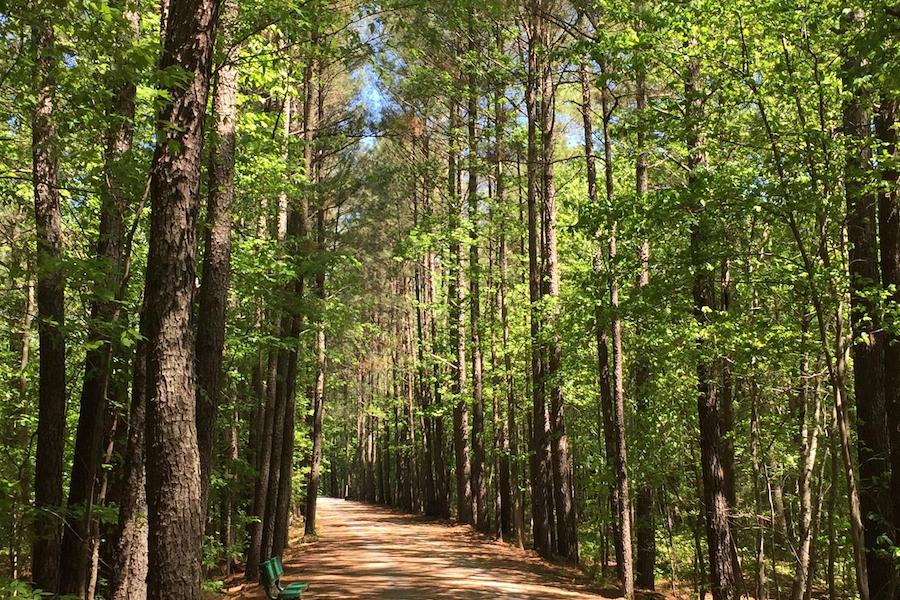
Few businesses have enough clout to get their own dedicated rail line, but that’s what happened with the American Tobacco Company (ATC). Created in 1890 by James B. Duke, ATC was one of the 12 original members of the Dow Jones Industrial Average when it debuted in 1896. The company so dominated the industry that the Supreme Court ordered it broken up into three separate companies in 1911. Even at a third of the size, ATC remained dominant and continued to crank out national brands like Lucky Strike and Pall Mall from its downtown Durham factory complex for the next 75 years.
The New Hope Valley Railroad was built in 1906 to transport tobacco leaf from farming communities farther south to Durham for processing and the finished tobacco products to retailers. Over the next 80 years, the rail lines were operated by a variety of transportation companies. Following the 1964 U.S. Surgeon General’s report linking smoking to lung cancer and a host of other medical problems, smoking and tobacco profits declined sharply. ATC closed its Durham factory in 1987, ending the primary reason for the rail line’s existence.
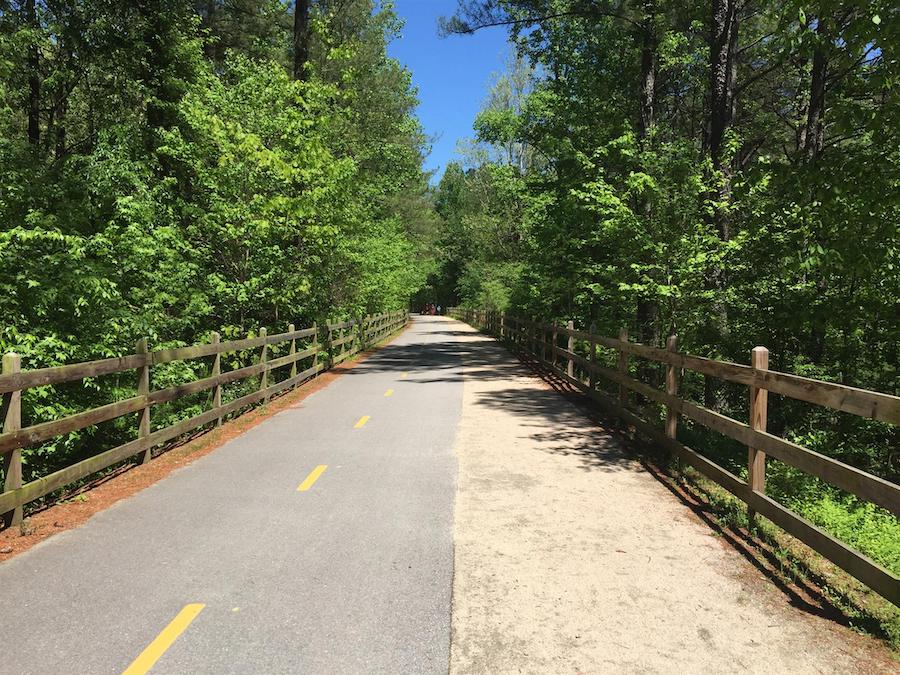
In 1989, the Durham Urban Trails and Greenway Commission was looking for a safe bicycle route from the city to Research Triangle Park when they discovered the unused railbed leading from the ATC site.
“With like-minded folks from the Carolina Tarwheels Bicycle Club, the Greenway Commission and North Carolina Rail-Trails, we formed the base for Triangle Rails to Trails Conservancy,” explained Al Capehart, a founding member of the nonprofit. “Once the Durham City Council put the ATT on their [Department of Transportation] Comprehensive Plan, funding eventually began to flow.”
The North Carolina Department of Transportation then began purchasing segments of the corridor from the Norfolk Southern Corporation in the early 1990s, approved funding for the tri-county project in 1995 and leased it to the respective counties (Chatham, Durham and Wake).
Given that the trail was built in three different sections and required the collaboration of three counties, two municipalities, two state agencies, the federal government and a few nonprofits, it might seem miraculous that the ATT even exists.
Connecting Communities
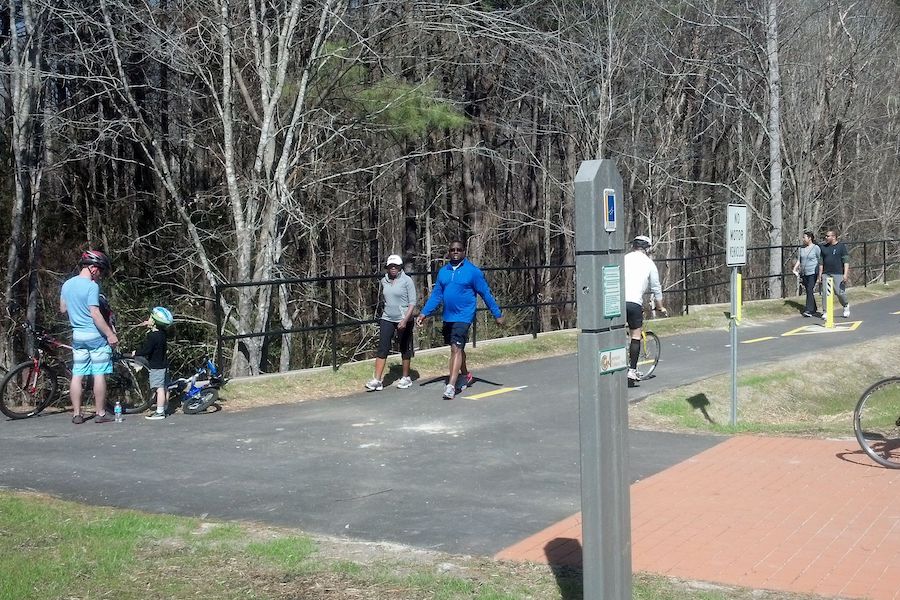
Located in North Carolina’s Triangle Region (a metropolitan area anchored by Raleigh, Durham and Chapel Hill, and home to three major research universities), the ATT connects to over 70 miles of trails and greenways through urban, suburban and rural communities. More than 16 miles of the trail are paved and include the most extensive completed stretch in the state of the East Coast Greenway, a 3,000-mile walking and bicycling route connecting Maine and Florida.
“Leaders in North Carolina’s Triangle Region have shown a commitment to developing multiuse trails since the late 1970s, and that’s one of the reasons the founders of the East Coast Greenway brought our spine route inland to the region,” said John Martin of the East Coast Greenway Alliance.
The northern trailhead begins in Durham across the street from Durham Bulls Athletic Park, home to the minor league team made famous in “Bull Durham,” the 1988 rom-com sports film starring Kevin Costner and Susan Sarandon. From there, the ATT runs south to the Chatham County line, through the suburban town of Cary and alongside Jordan Lake. The final leg crosses into the town of Apex in Wake County.
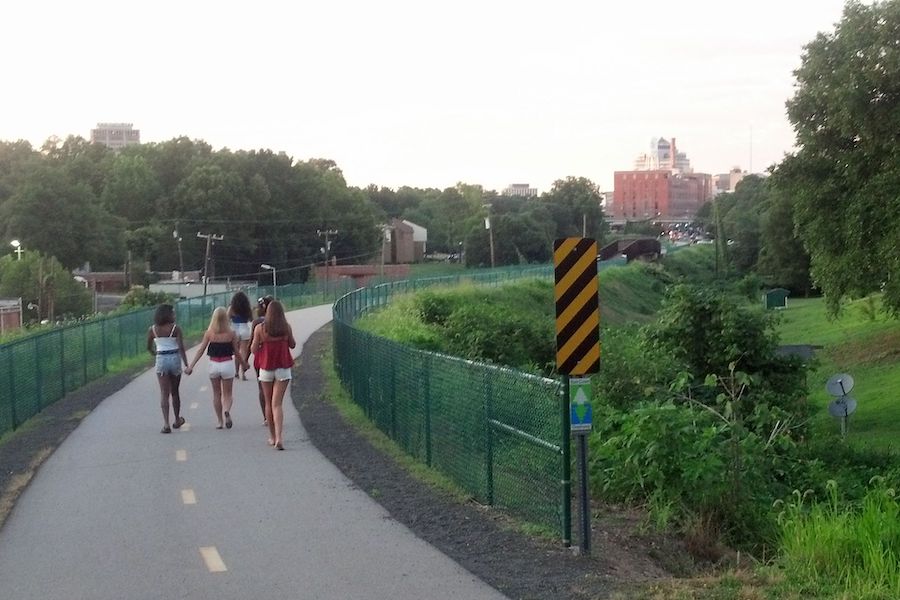
The first 3.2-mile section opened in downtown Durham in 2000, and two years later, a second 3.2-mile segment and a 1.5-mile spur were added. In Durham, the ATT is anchored at one end by the American Tobacco Campus—a historical retail, residential and business park renovation of the old tobacco factory complex—and by The Streets at Southpoint shopping mall at the other. Durham’s historical Fayetteville Street Corridor sits in between, representing the most urban and, arguably, most iconic part of the rail-trail. This is also the most diverse segment. The ATT runs through a relatively affluent white neighborhood on one side and a predominantly Black community on the other. A few blocks away is North Carolina Central University, a historically Black school.
Wake County opened its first 3.5-mile section in 2003. The crushed-granite surface was designed to be hoof-friendly for equestrians who had used the trail when it was still an abandoned corridor with no bridges over the streams. A 100-foot-long, 20-foot-high tunnel runs underneath Highway 64 near the Chatham-Wake County line.
Although Chatham County developed its master plan in 2002, it took another eight years to open its 4.7-mile segment. In both Wake and Chatham counties, the rail-trail runs parallel to Jordan Lake on land owned by the Army Corp of Engineers where there is very little development.
Trail Lovers
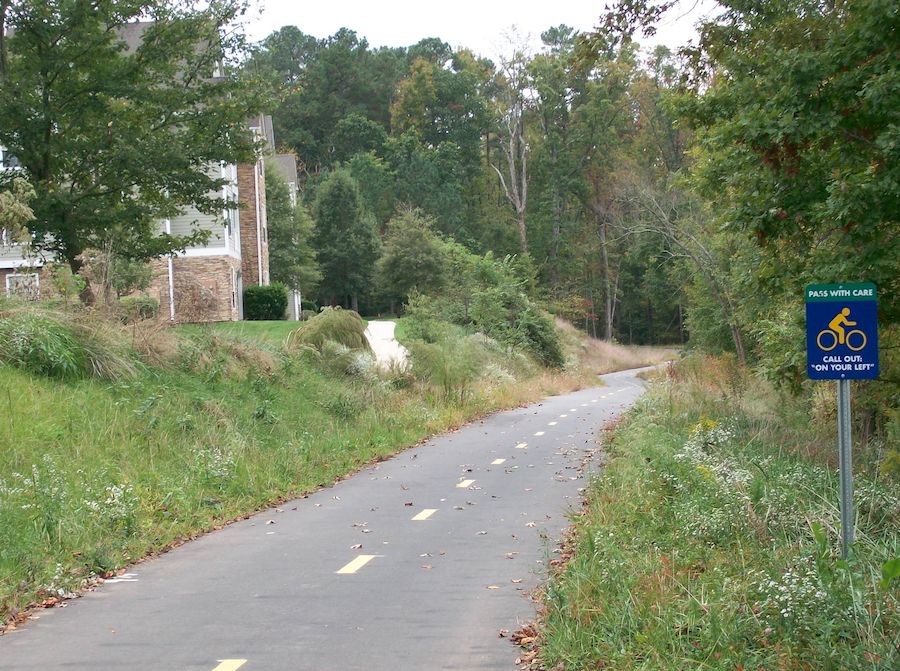
Dave Connelly has been hooked on trails and greenways since taking his solo tour of rail-trails across Wisconsin in 1991. In 1996, he bought a home 1,000 feet from the future ATT.
“I started walking and biking there while it was still just an abandoned rail bed with tadpoles in the puddles,” said Connelly, a longtime local bike-ped advocate. “Now, it’s fun to see little ones on the local trails safely learning how to operate their first bicycles, and it’s inspiring to see Barry, a nearly 90-year-old, on his daily ATT ride.”
Identifying one of her favorite spots, Mosley said, “I like the section of bridges in Durham stretching from Herndon Park to New Hope Church Road because within about 3 miles you get to cross over all three counties and a couple of wooden bridges over creeks.” She continued, “I meet folks out riding their horses on this section, too. I wish more people of color had easier access to the parts of the American Tobacco Trail outside of Durham County.”
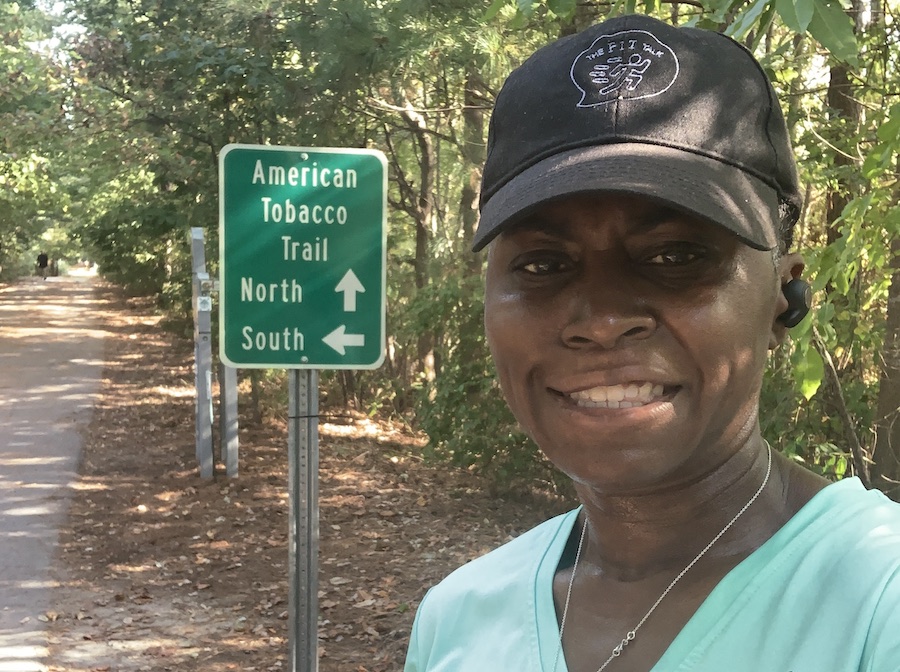
This mostly flat rail-trail is also a popular venue for races and fitness challenges such as the upcoming Tobacco Road Relay and Half Marathon on March 20, for which Mosley is currently training. Each year, roughly 10% of participants qualify for the Boston marathon.
In addition to recreation, the ATT is popular for what Durham’s Bicycle and Pedestrian Coordinator Dale McKeel calls utilitarian purposes—getting people from Point A to Point B. Many people in the area use it to travel to and from restaurants, shopping and work, including McKeel himself who notes that he’s been using the trail for commuting for about 15 years.
Funding and the Future
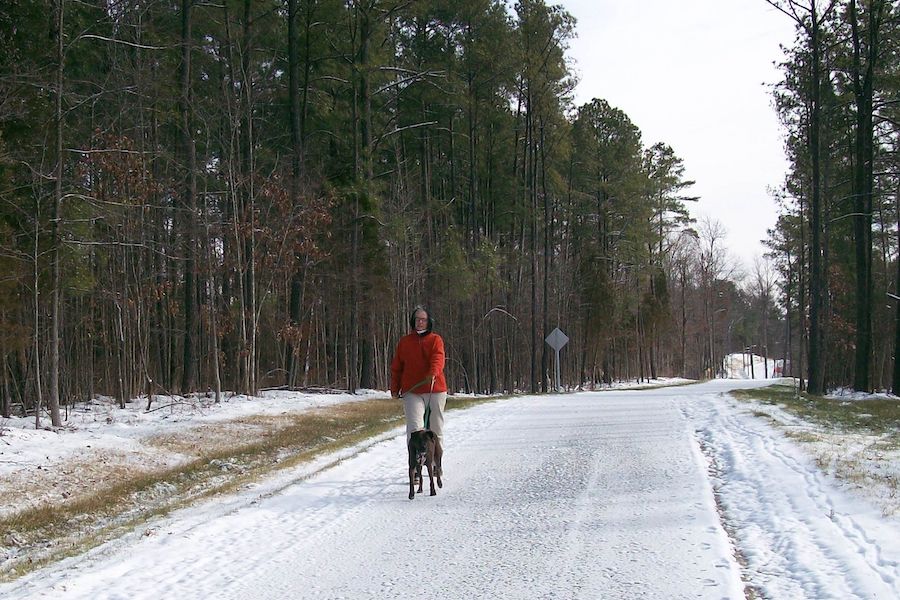
Rep. David Price’s 4th Congressional District includes all of Durham County and portions of Chatham and Wake counties. A longtime advocate for multimodal transportation, Price was instrumental in securing the initial federal dollars for the ATT. In 2014, along with Rep. G. K. Butterfield (N.C.-01), Price also secured funding for the Durham Belt Line, which will connect the ATT to the Ellerbee Creek Greenway when completed.
“As the City of Durham and the Triangle area continue to grow, it becomes even more vital to invest intelligently in ways to make the area more livable and more connected,” Rep. Butterfield said in a news release at the time. “The future of transportation in North Carolina must enable people to access different modes of transport easily and improve the quality of life by providing opportunities for people to stay active.”
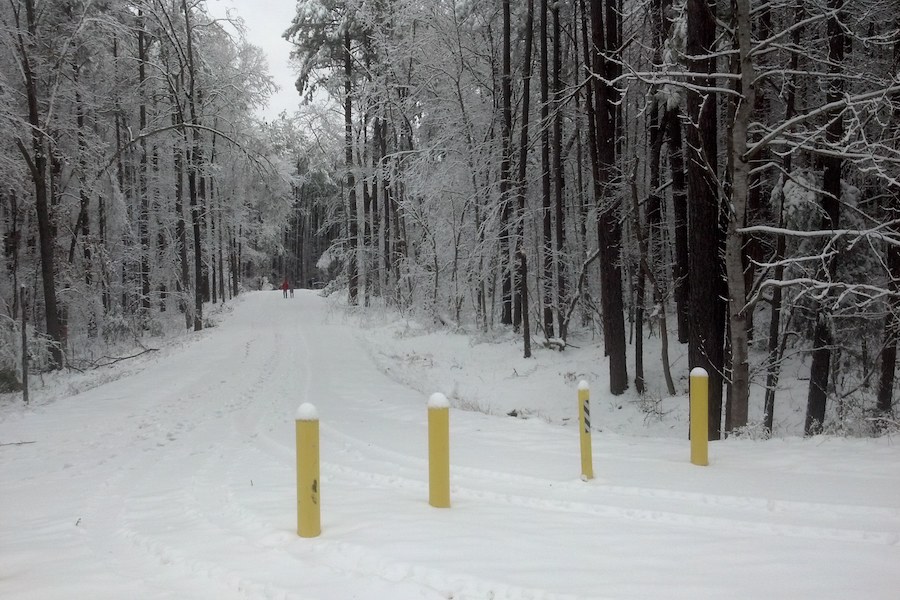
The success of the ATT has prompted other greenway expansions in the area. Last month, Wake County commissioners voted to fund the 6.5-mile Apex West/Beaver Creek Greenway corridor and a milelong section of the Middle Creek Greenway in the town of Apex. Both are expected to be completed by the end of the year.
Trails continue to prove themselves to be a vital part of North Carolina’s infrastructure, providing significant health, economic and transportation benefits, and serving as the cornerstone of the state’s $28 billion outdoor recreation industry. In celebration of its status as a growing hub of trails, the state legislature designated 2023 as the “Year of the Trail.” Spearheaded by the Great Trails State Coalition, special programs and events to promote trails—as well as recognize the volunteers that have played an integral role in these important projects—will take place throughout the year in all 100 counties in the state.
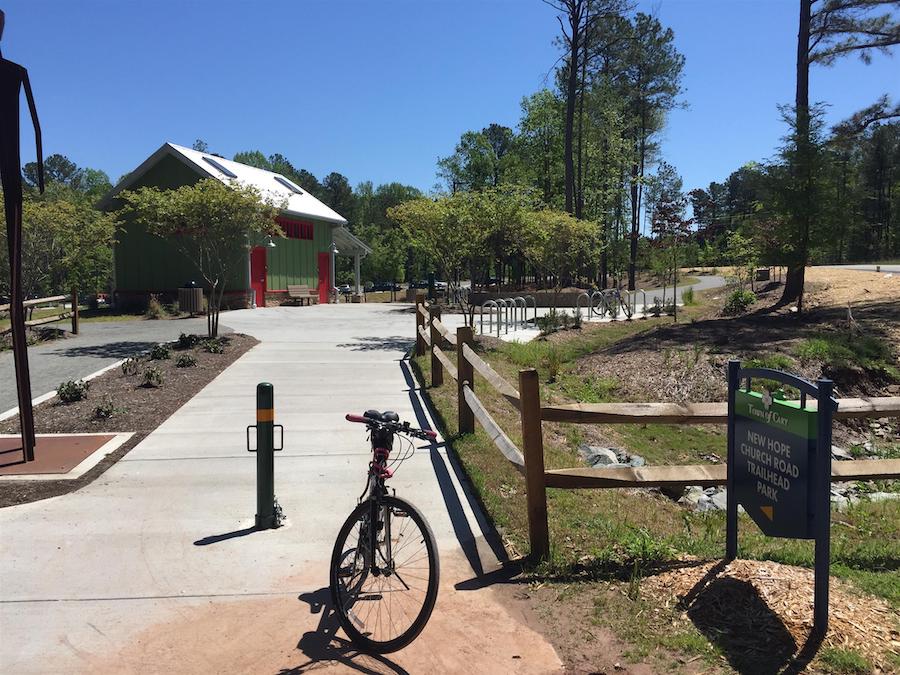
Related Links
- Triangle Rails to Trails Conservancy
- Durham Parks & Recreation
- Chatham County Parks & Trails
- Wake County Parks, Recreation & Open Space
Trail Facts
Name: American Tobacco Trail
Used railroad corridor: Originally created as the New Hope Valley Railroad, the corridor was later owned and operated by the Durham and South Carolina Railroad.
Trail website: Triangle Rails to Trails Conservancy
Length: 22.2 miles
County: Chatham, Durham and Wake
Start point/end point: Durham Bulls Athletic Park (409 Blackwell St.) in downtown Durham to the trail’s New Hill-Olive Chapel Road Parking Area (1309 New Hill-Olive Chapel Road) southwest of Apex
Surface type: Asphalt, crushed stone
Uses: Walking, biking, inline skating and horseback riding; wheelchair accessible
Grade: The trail is relatively flat with a few slight inclines.
Difficulty: The trail experience is considered easy, especially with 16 of its 22 miles paved.
Getting there: The nearest airport is the Raleigh-Durham International Airport (1600 John Brantley Blvd., Morrisville), 14 miles from the northern end of the American Tobacco Trail in Durham.
To reach the northern trailhead, take I-85 to Exit 177 and head south on US 15/501 Business/North Roxboro Street; this will turn into South Mangum Street. At West Pettigrew Street, turn right, followed by a left on Blackwell Street.
To reach the southern trailhead from Raleigh, take US 1 south to Exit 89 toward New Hill/Jordan Lake, turn right, and drive about 4 miles up New Hill-Olive Chapel Road.
Access and parking: At the northern trailhead across from Durham Bulls Athletic Park, parking is available beneath the East-West Expressway on Morehead Avenue. Trail parking is also available at Solite Park (4704 Fayetteville Road, Durham).
At the southern entrance, trailhead parking is available at the New Hill-Olive Chapel Road Parking Area (1309 New Hill-Olive Chapel Road). To reach another southern trailhead (966 Wimberly Road, Apex), take US 64 West, turn right on Jenks Road, and then turn left on Wimberley Road; parking is on the right.
To navigate the area with an interactive GIS map, and to see more photos, user reviews and ratings, plus loads of other trip-planning information, visit TrailLink.com, RTC’s free trail-finder website.
Rentals: Bike rentals are available from Durham Bicycles (756 9th St., Durham; phone: 919.251.8103) and Bullseye Bicycles (102 Morris St., Durham; phone: 919.438.3883).

Donate
Everyone deserves access to safe ways to walk, bike, and be active outdoors.



